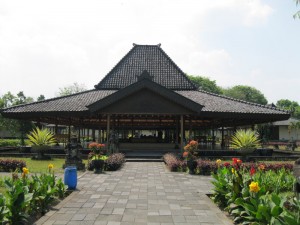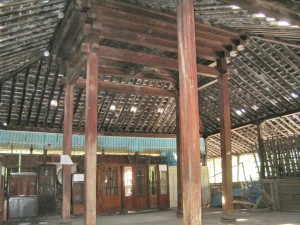 A wooden frame building designed to represent the best of human traits, in the Javanese culture. Parts of the building had representations, in days of old a person would fast and meditate before preforming tasks in the building process.Of course a joglo became a symbol of status in Java . A place where guests and community could meet.The design of the joglo lay in the hands of the owner who would chose carving styles,structural details,along with quality of wood. In many cases people wood buy the trees standing, then prepare then for cutting in the next year after being limbed and left standing to dry.
A wooden frame building designed to represent the best of human traits, in the Javanese culture. Parts of the building had representations, in days of old a person would fast and meditate before preforming tasks in the building process.Of course a joglo became a symbol of status in Java . A place where guests and community could meet.The design of the joglo lay in the hands of the owner who would chose carving styles,structural details,along with quality of wood. In many cases people wood buy the trees standing, then prepare then for cutting in the next year after being limbed and left standing to dry.
Teak wood was most commonly used,giving the building a lasting presence.Nangka(jackfruit wood)was also used,considered a special wood with lasting qualities and great strength.
 Ceremony was made for the standing of a joglo and later again if taken down and moved.The beauty of the joglo is the jointery making the building a “knock-down” structure,easy to break down and reassemble again.Never made in mass production each joglo is one in its self.
Ceremony was made for the standing of a joglo and later again if taken down and moved.The beauty of the joglo is the jointery making the building a “knock-down” structure,easy to break down and reassemble again.Never made in mass production each joglo is one in its self.
Now a days with changes in Java culture and economic reasons,joglos are a thing of the past.Now they can be found housing cows or chickens,becoming a workshop for furniture or handicrafts.Many have been sold for wood to make furniture,others still standing in the “kampung”(villages)a reminder of a legacy slowly fading away.Today people purchase joglos for using as villas,restaurants,retreat centers,etc,etc,giving people an opportunity to enjoy the beauty of these structures.It is believed Joglo was influenced by the Chinese who came
to Indonesia early-on, bringing there craft of carpentry.
